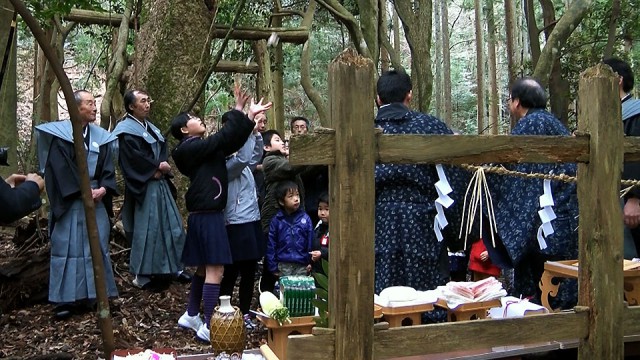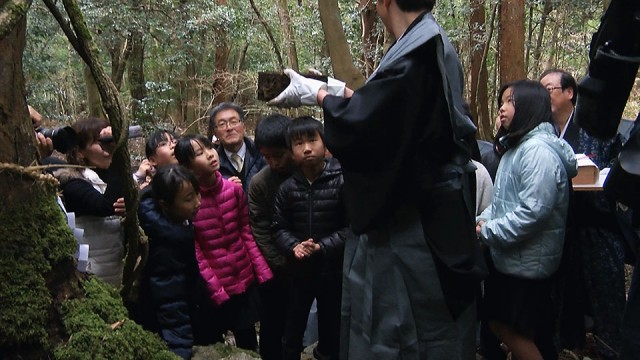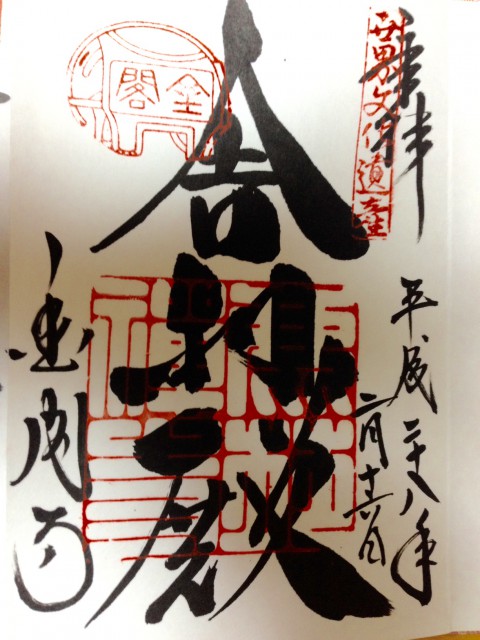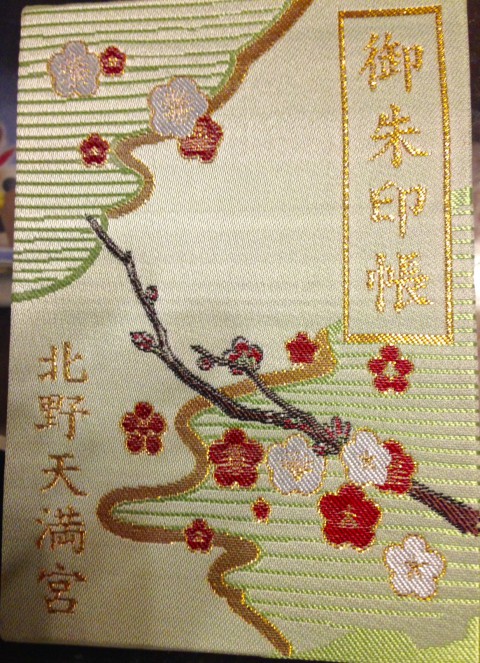
“Uenomiya” is the remains of an old shrine located in the mountain, 200 meters from the shrine office. Supposedly, the god of the mountain lives there so it is a sacred place.
Visitors pray once more at this place after praying at “Honden” (main sanctuary).
After praying at Uenomiya, people shout “Hyakumangoku!” (million bushels) and they scatter “Hana mochi” ( small pieces of rice cakes which are considered as one of the lucky charms in Japan) for visitors.

They have “Yumi uchi” (shooting an arrow) for the second time after praying at Uenomiya.
People gather around the sacred tree and dig out the maino bako (box)
which was buried a year ago, from the root of the tree.
Oikemono is always held on Januray 16th of the lunar calender (old calendar).
The date of the event has been set by the date, not by the day of the week,
so the day of the week for the event keeps changing every year on the present calendar.
It surprises me that there are big differences of the dates in February and March
between the old calendar and the present calendar.
They do not change the date of the event to Sunday or any other holidays for tourist convenience. This year, it was held on Tuesday. Even it was a weekday in the morning,
many children who should had been in the school came to this event.
Actually, their teachers always bring students to this event from school every year.
As I was watching people of all ages gathering around, I thought that Oikemono
will be inherited in a natural way like this as over the past 1,000 years.
I talked with one of the people who was in charge of this event.
He said that Oikemono is the most important festival for the people there.
Even so, it is also a simple festival because there are no street booths or banners.
The sight wasn't a show for visitors at all, which made me feel that it was the
true spirit of Shinto ritual.
T.S







